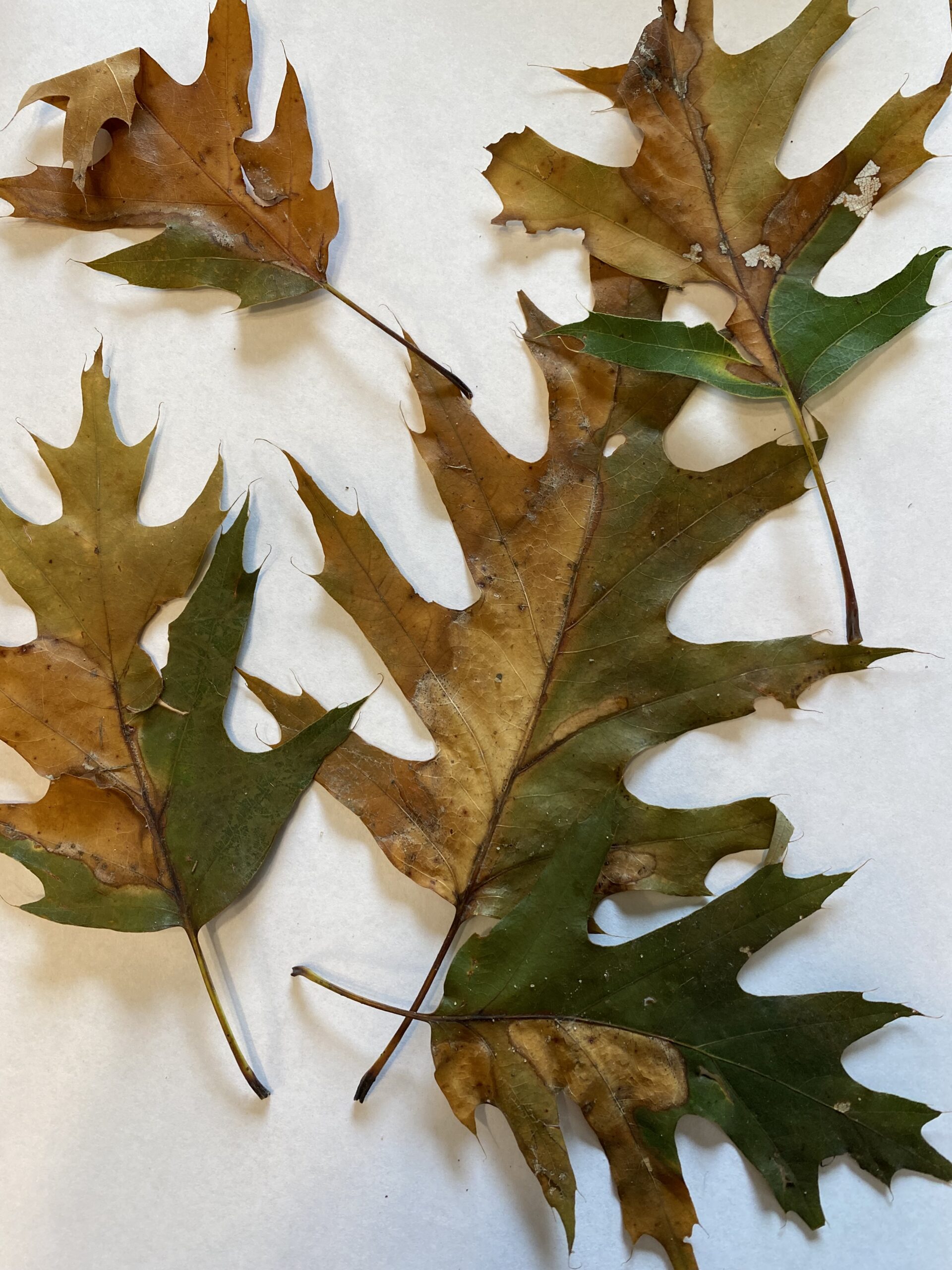By Linda Williams, DNR Forest Health Specialist, Woodruff, Linda.Williams@wisconsin.gov or 920-360-0665
Tubakia leaf spot (Tubakia dryina) is a leaf disease that typically affects the lower canopy of oaks. It caused some issues in 2021 and is affecting red oak trees in north-central Wisconsin this year as well.
Symptoms are typically worse in the lower canopy because there is more moisture closer to the ground. Leaves may be shriveled and brown and even drop to the extent that lower branches lose nearly all their leaves.
Branches at the top of the tree often still have green leaves, which can help distinguish Tubakia leaf spot from oak wilt, in which leaves drop first from the top of the tree or the outer parts of branches. Leaves with Tubakia leaf spot also develop brown blotches and curling, which is different than the leaf browning of an oak wilt infection.
Although infection occurs early in the season, symptoms don’t develop until later, so effects on tree growth are minimal. In urban areas, removing infected leaves can help reduce future infections. In forested areas, the lower branches may die, but it doesn’t typically kill the tree, so management is not necessary.

